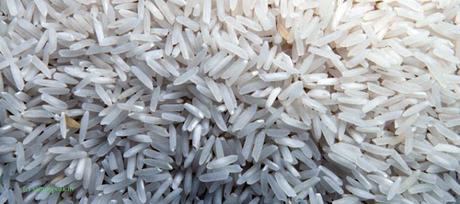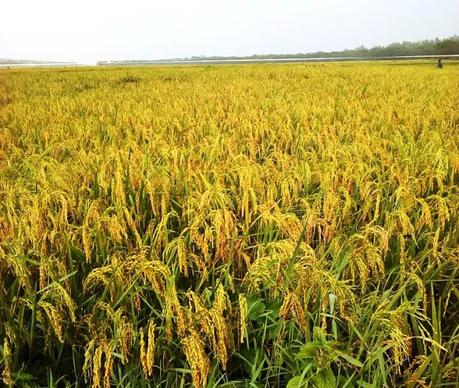Fast foods, Chinese and more .. the food varieties have changed. One could see people dining with chopsticks too or using the forks and spoons – long way from the times when people ate sumptuous food on banana leaves with their hands. A few decades ago, when I got the first taste of Maggi, could not relish but never thought it would revolutionise Indian market, coming to be known as ‘2 minutes ready food’. The Maggi company was acquired by Nestlé in 1947.
 To most South Indians life
is all about ‘rice’ - for
the no so well informed, the varieties
in Tamil Nadu include : Aaduthurai (ADT); Samba, Basmati tukda, Chengalpattu
sirumani, Chithiraikar, Samba masuri, IR 8, IR 20, kaividhai samba, kamban,
kauni nel, karunguruvai, kichili samba, kudhiraivaal samba, mansoori, mappillai
samba, nallamani samba, periyavari, Pisini, Ponni, Puzhuthikkal, seeraga samba,
sivappu chithiraikar, sornavari, thangam samba, vellai kuruvai and more … ..
To most South Indians life
is all about ‘rice’ - for
the no so well informed, the varieties
in Tamil Nadu include : Aaduthurai (ADT); Samba, Basmati tukda, Chengalpattu
sirumani, Chithiraikar, Samba masuri, IR 8, IR 20, kaividhai samba, kamban,
kauni nel, karunguruvai, kichili samba, kudhiraivaal samba, mansoori, mappillai
samba, nallamani samba, periyavari, Pisini, Ponni, Puzhuthikkal, seeraga samba,
sivappu chithiraikar, sornavari, thangam samba, vellai kuruvai and more … ..
Noodles are a type of food made from unleavened dough which is rolled flat and cut, stretched or extruded, into long strips or strings. Noodles are usually cooked in boiling water, sometimes with cooking oil or salt added. They are also often pan-fried or deep-fried. Noodle dishes can include a sauce or noodles can be put into soup. Noodles are a staple food in many cultures – though we mostly think them to be Chinese.
Chinese cuisine is an important part of Chinese culture, which includes cuisine originating from the diverse regions of China, soy sauce, noodles, tea, and tofu, and .. .. rice ! The preferences for seasoning and cooking techniques of Chinese provinces depend on differences in historical background and ethnic groups. Geographic features including mountains, rivers, forests, and deserts also have a strong effect on the local available ingredients, considering that the climate of China varies from tropical in the south to subarctic in the northeast.
One would be surprised to know that China is the world's largest producer of rice, and the crop makes up a little less than half of the country's total grain output. China accounts for 30% of all world rice production. In a given year total rice output came from four different crops. The early rice crop grows primarily in provinces along the Yangtze River and in provinces in the south. All rice cultivation is highly labour intensive. Rice is generally grown as a wetland crop in fields flooded to supply water during the growing season. Indica rice (Hsien) is dominant in the south, while japonica rice (Keng) is widely planted in the north. Also, aromatic, glutinous and other special types of rice are widely planted. The commercial cultivation of hybrid rice has allowed about two million hectares of ricelands to be diversified to other uses, which helps increase farmers' incomes. Rice production, post-harvest activities and the processing of rice into other products provide the main source of employment and income for at least 50 million families.
Amid the seven-month-long standoff between India and China along the Line of Actual Control (LAC) in Ladakh, China, for the first time in at least three decades, started importing rice from the Indian market. The development comes amid strained supplies in China while India was exporting at a very discounted price.
“For the first time, China has made rice purchases. They may increase buying next year after seeing the quality of Indian crop,” said BV Krishna Rao, president of the Rice Exporters Association, as quoted by Reuters. Chinese traders have asked to export at least 100,000 tonnes of broken non-basmati rice for shipments between December to February at a cost of $300 per tonne, the cheapest in the global market. Notably, China is the world’s biggest importer of rice while India is the largest exporter. However, Beijing has previously avoided Indian rice citing quality issues. China’s traditional suppliers – Thailand, Vietnam, Myanmar and Pakistan – raised their prices owing to limited surplus supplies for export. These countries were quoting at least $30 per tonne more than the Indian prices, according to rice trade officials.

Notably, one of the very few economic gains for India amid the coronavirus pandemic has been the exponential growth in the demand for rice exports, up by 70 per cent to nearly 7.5 million tonnes in the first six months of the financial year. The breakthrough comes at a time when political tensions between the two countries are high because of a border dispute in the Himalayas.
That does augur well for Indian farmers
With regards – S. Sampathkumar5.12.2020.

